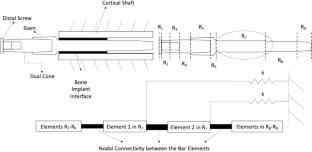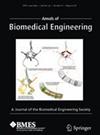Evaluation of the Transfemoral Bone–Implant Interface Properties Using Vibration Analysis
Abstract
Evaluating the bone–implant interface (BII) properties of osseointegrated transfemoral (TFA) implants is important for early failure detection and prescribing loads during rehabilitation. The objective of this work is to derive and validate a 1D finite element (FE) model of the Osseointegrated Prosthetic Limb (OPL) TFA system that can: (1) model its dynamic behaviour and (2) extract the BII properties. The model was validated by: (1) comparing the 1D FE formulation to the analytical and 3D FE solutions for a simplified cylinder, (2) comparing the vibration modes of the actual TFA geometry using 1D and 3D FE models, and (3) evaluating the BII properties for three extreme conditions (LOW, INTERMEDIATE, and HIGH) generated using 3D FE and experimental (where the implant was embedded, using different adhesives, in synthetic femurs) signals for additional validation. The modes predicted by the 1D FE model converged to the analytical and the 3D FE solutions for the cylinder. The 1D model also matched the 3D FE solution with a maximum frequency difference of 2.02% for the TFA geometry. Finally, the 1D model extracted the BII stiffness and the system’s damping properties for the three conditions generated using the 3D FE simulations and the experimental INTERMEDIATE and HIGH signals. The agreement between the 1D FE and the 3D FE solutions for the TFA geometry indicates that the 1D model captures the system’s dynamic behaviour. Distinguishing between the different BII conditions demonstrates the 1D model’s potential use for the non-invasive clinical evaluation of the TFA BII properties.



 求助内容:
求助内容: 应助结果提醒方式:
应助结果提醒方式:


